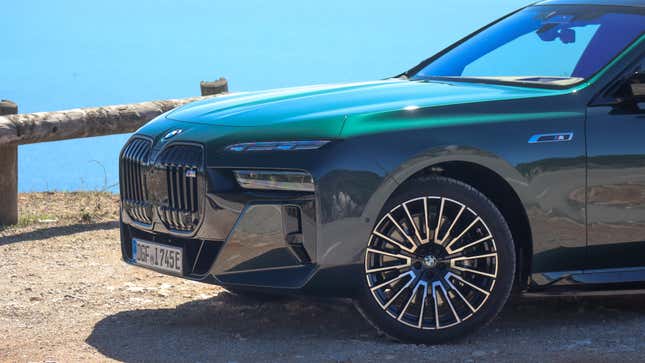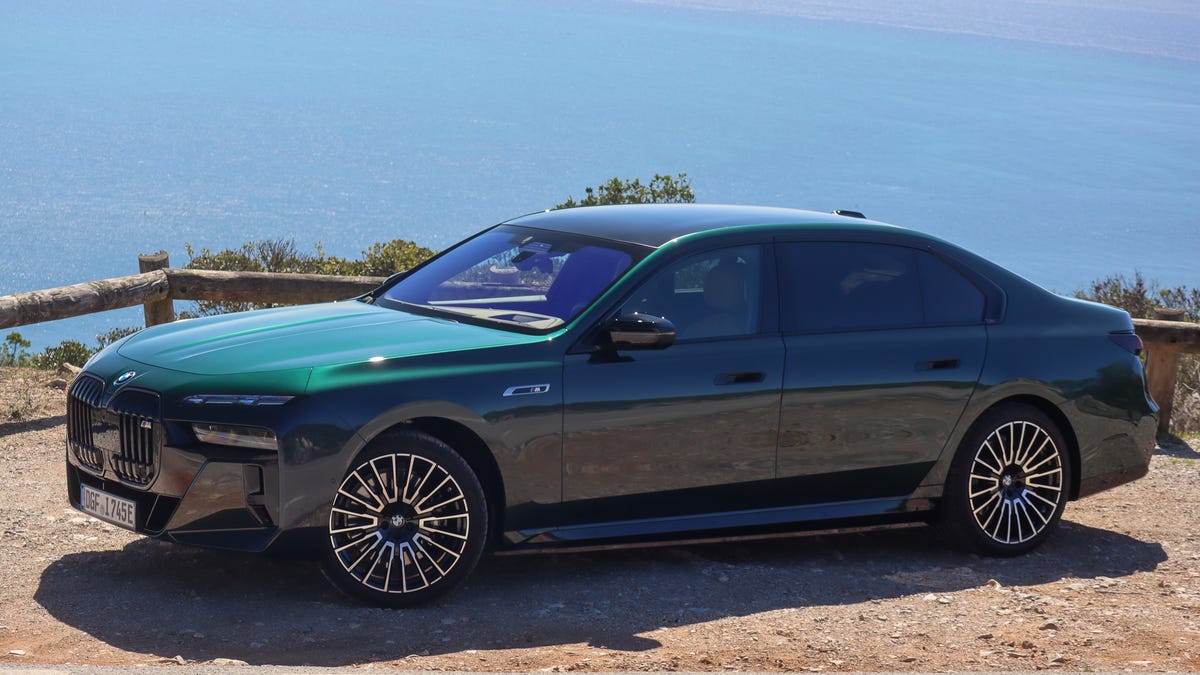To many enthusiasts, the M brand has been in a long decline. It’s not clear exactly when that decline started. To some of them, BMW screwed up when it put a V8 in the M3, eschewing the naturally aspirated four and six-cylinder engines of the first three acts. For many, BMW jumped the shark when it M-ized crossovers like the X5, X6, and later the M-exclusive, XM. These crossovers are often held up as evidence of BMW losing the plot. It had affixed the storied M brand to the backside of ugly, overgrown, nonathletic pig-like SUVs. It was trading the very essence of what the fans and the brand had mutually agreed upon was the very essence of M, for a few cheap sales of fast crossovers that shouldn’t have existed.
I don’t know if I’ve ever agreed with that take. Back in college, I worked at a BMW dealership and got some hands-on experience with these vehicles. Originally, I showed up to the job with the same attitude, ready to hate on all the big so-called M-badged SUVs. Then, I drove a couple of them and I was quickly proven wrong. The cars were a blast to drive. BMW figured out how to dial out most of the inherently compromised handling characteristics of an SUV, sure, they were still tall as heck, but what do you expect from an SUV that was about the same height as a grown man? The height didn’t matter, BMW had performed a magic trick. These big behemoths felt fast, agile, and engaging in nearly all the same ways as their sedan counterparts. And the most pertinent part – they felt far sharper to drive than the regular crossovers that they were based on. Some may disagree, but I’ve always thought that the M crossovers have represented the M spirit quite successfully.
So, when I showed up in Lisbon, Portugal to get behind the wheel of a couple of new electric BMWs, including the BMW i7 M70 xDrive, I wondered, would BMW keep that same spirit of M energy for its big flagship model? What does an M-badged BMW even look like in the era of electrification? I thought I’d get those questions answered, but after flinging the i7 M70 xDrive around some tight ass roads on the outskirts of Lisbon, the only thing I learned is that it doesn’t seem like BMW knows what M is. If anything is diluting the M brand, it isn’t the SUVs. It’s this car.
(NOTE: BMW Flew me and a few dozen journalists to its second home in Lisbon, Portugal. It also fed me as many Pastel De Nata’s as I could fill my belly with.)
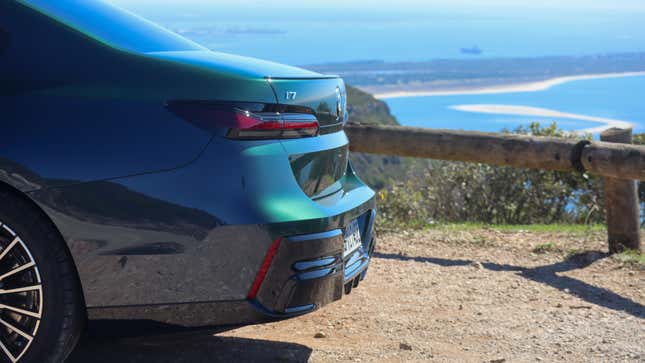
The BMW i7 is sort of the keystone to BMW’s intermediate EV push. Gone are the wildly styled, damn near avant-garde i3 and i8; two cars where designers and engineers were allowed to go wild with what they thought the car of the future should look and feel like. Instead, BMW’s latest electrification efforts are more traditional. The fancy carbon fiber spaceframe of the i3 and i8 aren’t here. The i7 uses an evolved version of the CLAR (Cluster Architecture) platform used on the previous generation 7-series, but tweaked to accommodate battery electric powertrains.
Remarkably, there are little to no ergonomic differences between the i7 and regular 7 series. There’s no weirdly high floor or compromised headroom, or whack styling tricks to disguise a boxy battery case that would hang below the rocker panels. BMW did a good job integrating its big traction battery and electric motors into the platform. The i7’s styling may not be everyone’s cup of tea, but it looks mostly identical to the 7-series, both inside and out. The wheels, paint colors, and interior are all the same. The only way to tell the difference between the two is the little i7, 750, or 760 badge on the back.
I’ve driven the BMW i7 before – last year in Palm Springs, I drove both the gas-powered BMW 760 and the electric i7 xDrive60. At the time, I wasn’t sure if simply chucking some batteries underneath a regular ol’ gas-powered car was a wise idea, especially since BMW wanted to go all-in with electrification and discontinue gas-powered cars entirely. After all, there are plenty of advantages that a dedicated EV platform can bring. They’re often lighter (the i7’s curb weight flirts with the 6,000 lbs mark), and more space efficient (the i7 has no frunk despite its long hood). But, like the old i3 and i8’s carbon fiber spaceframe, those unseen engineering advantages don’t really matter all that much to the end consumer.
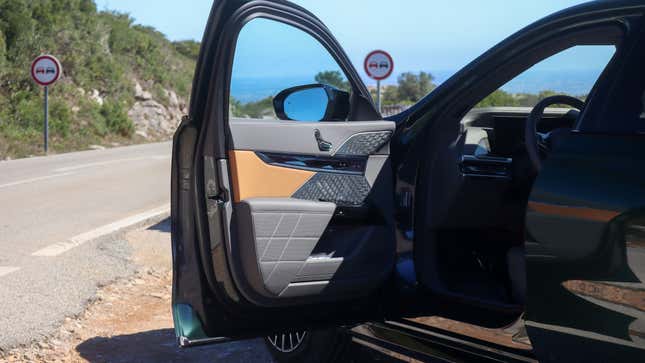
The M brand is immensely successful for BMW, especially in the US. BMW says that a whopping 40% of its M-branded vehicles sold worldwide, find their homes in the United States. This is both for the full-on M cars, but also the M-performance vehicles – cars that are performance upgrades over the standard cars, but not the balls-to-the-wall track day specials that carry the M-badge. BMW has no plans on offering a full M 7-series, as that would completely betray the luxurious nature of BMW’s big-ass flagship sedan. The i7 M70 xDrive is as sporty of a non-Alpina y’all are gonna get, folks.
To create the i7 M70 xDrive, BMW implemented a few changes to the standard i7. For starters, the rear motor has been enlarged, boosting output. Together with the front motor, the i7 produces 650 horsepower and 811 ft/lbs of torque when the driver taps a boost paddle. The car now scoots to 60 MPH in as little as 3.5 seconds. BMW says it’s the quickest and most powerful electric BMW it has ever made.
Because this is an M-performance vehicle, it’s performance chops must go beyond outright power. There are sporty summer tires wrapped around 21-inch wheels, that should give the three-ton sedan grip. A special M-specific air suspension with electronically controlled shock absorbers and active roll comfort should make the i7 M70 xDrive both graceful and engaging through the curves.
That all sounds so nice. I wish all those upgrades did something to the actual dynamic qualities of the car.
The last time I drove an i7, I complained that it was too soft, bereft of all the characteristic refined driving goodness and responsiveness that we expect from BMW. It’s not that the the i7 M70 version drives badly, that’s not fair, it’s just that I’m not quite sure what the hell BMW is going for here. If this car is supposed to offer upgraded performance, more dynamic performance, where the hell was it? This was the softest, most non-M BMW I had ever driven in my life. It accelerated well enough, but when it came to curves, the i7 M70 felt wide, heavy, and unathletic. What is M performance supposed to even be?
BMW M CEO Franciscus Van Meel told me that BMW has zero plans to play the horsepower game like some all-EV brands like Lucid or even Tesla. Thus, its 650 horsepower may sound like roughly half the power of some competitors, but Van Meel argued that the i7’s real, usable, measured horsepower and acceleration times are measured honestly. Unlike some competitors which may generate these fantastic 0-60 numbers or high horsepower ratings under exceptionally favorable conditions. What’s the use of a 1,100 horsepower EV if that 1,100 HP is only available for a split second, and the car’s components overheat after half a lap of a racetrack?
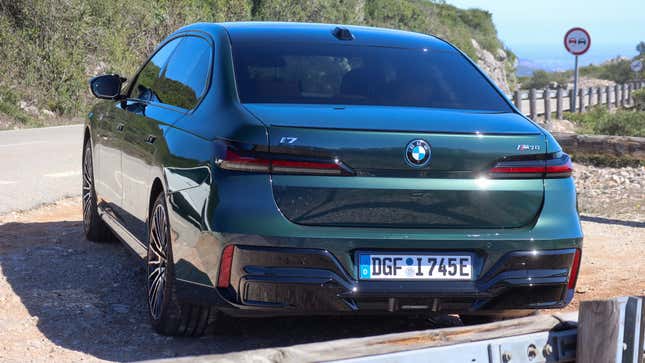
I’d agree on some level. I think the mega horsepower wars amongst EVs are a waste of time and have diminishing returns. The i7 M70 xDrive is more than sufficiently fast, its 650 horsepower will snatch the big sedan and its occupants to 60 in as little as 3.5 seconds. Thrilling, but in the era of electrification, damn near everything is fast. Hell, in markets outside of the US, you can get a Smart car that can turn nearly identical acceleration numbers to those of this car, BMW’s top-of-the-line electric flagship. If BMW wants the i7 to be special, it’s got to do more than just go fast.
This is why it’s a little unfair to distill all of the i7 M70’s EV competitors down to simply being high-horsepower, one-trick ponies. Cars like the Lucid Air and even the Tesla Model S are genuinely engaging cars to drive. Yes, they’re fast, but they handle well, too. They feel light and agile as if they shrink around the driver – especially during hard driving stints. By comparison, the BMW i7 M70 xDrive feels every bit as big as its 5,929-pound curb weight would suggest. To the car’s credit, it manages the weight pretty gracefully, but the i7 doesn’t feel like it’s defying physics and disguising its gargantuan mass as some of its ground-up EV competitors do.
I’m not saying the i7 M70 xDrive is a bad car – not in the slightest. For as disappointingly unsporty as the i7 is, the ride is exceptionally composed and comfortable. It’s outrageously quiet, and the interior quality, design, and comfort are sumptuously superb. The i7 feels expensive and well made, unlike the “my-first-luxury-apartment-with-grey-wood-laminate” feel of the Tesla Model S. Even the i7’s infotainment is snappy and reliable, although I think it’s a little too menu-laden, bordering on convoluted.
The point is, is that I just don’t understand what this car is supposed to be. Van Meel insists it is for the buyer who would have bought the old V12 7-series when it still existed. That’s fair, but what the hell does that have to do with M? Going forward, does this mean that M is just a big motor and straight-line speed? What does this mean for the all-electric BMW M-brand future?
I hope BMW figures it out sooner rather than later. Because if the future of M is just going fast in a straight line, then, well, that sounds like hell.
